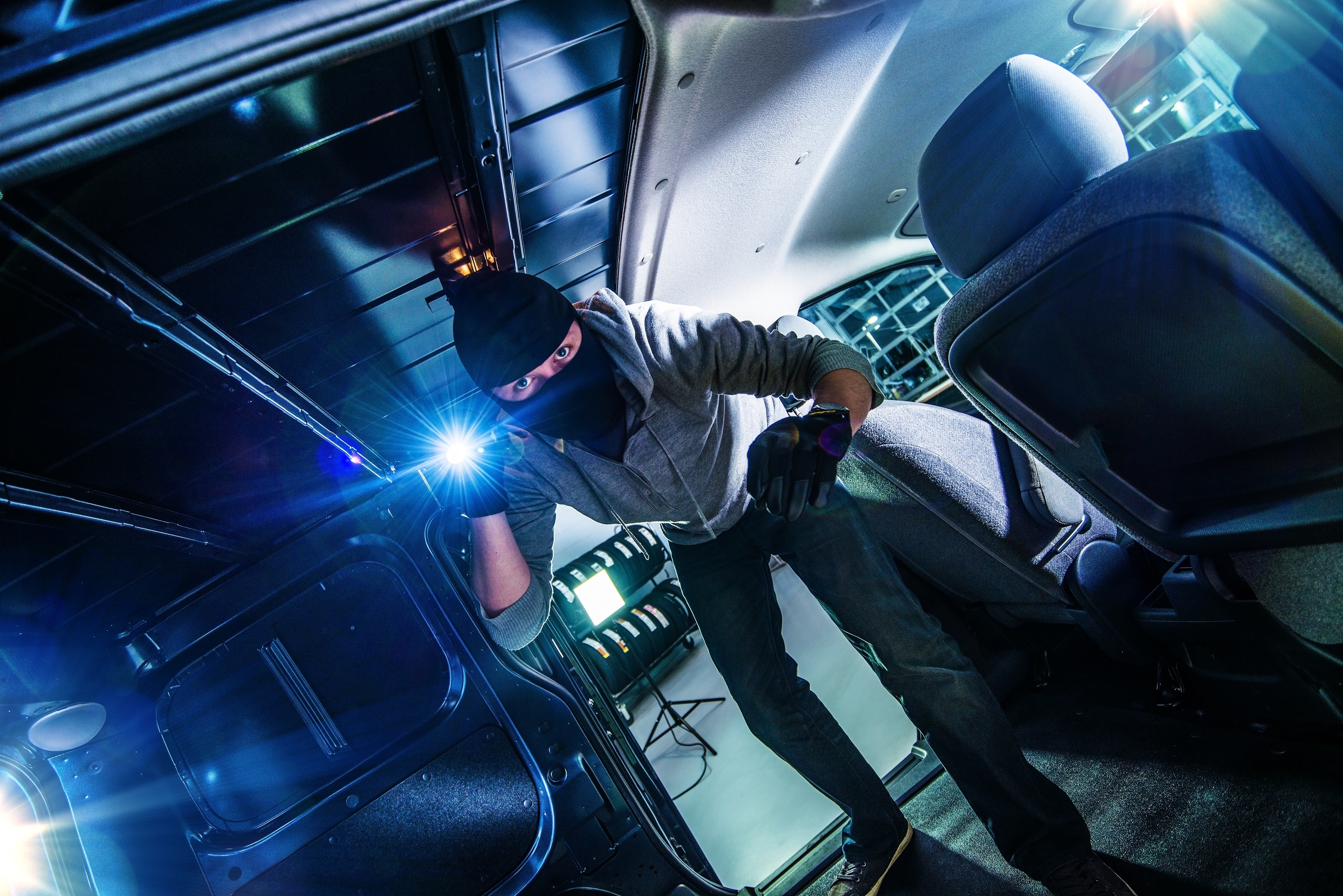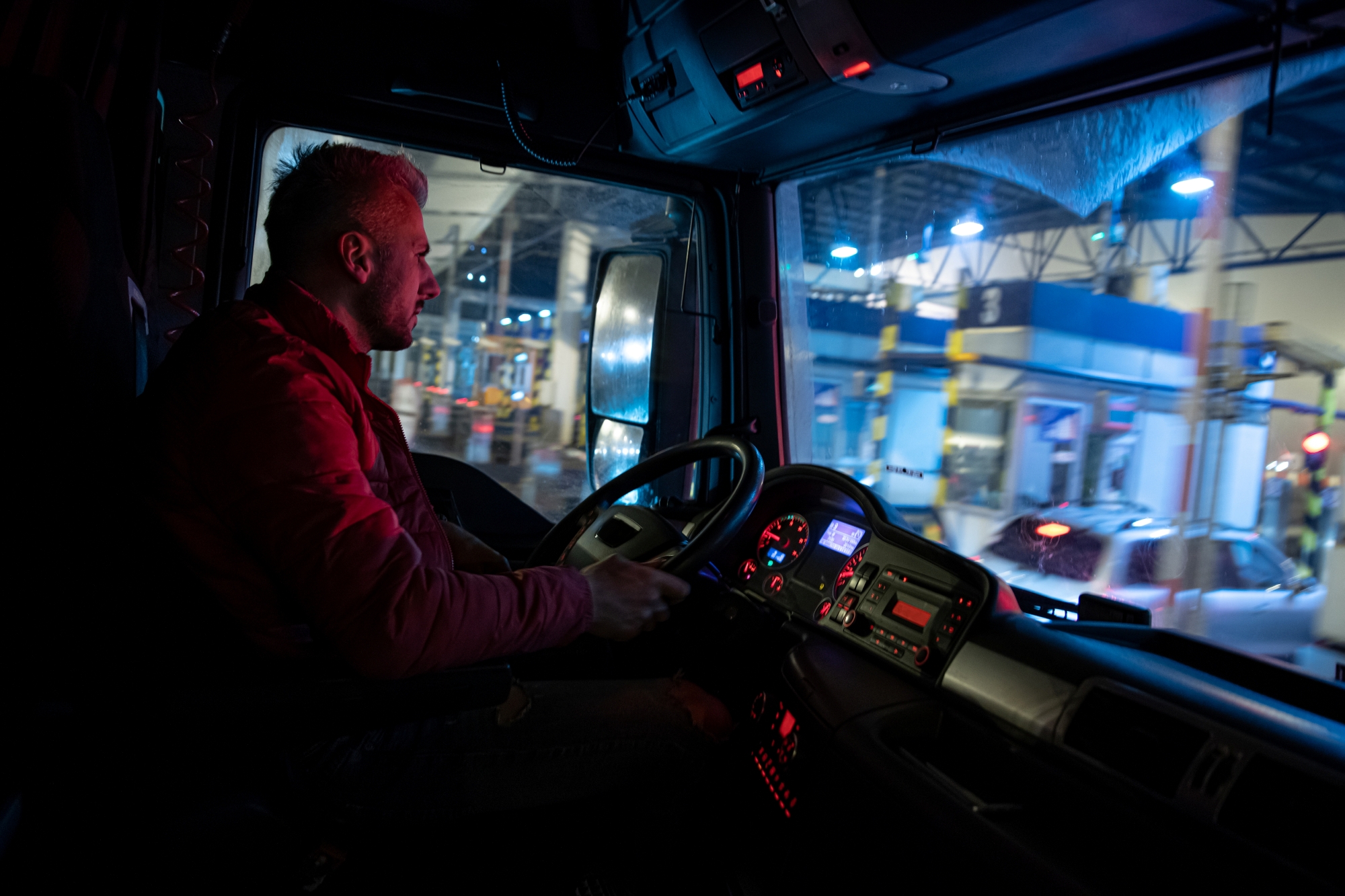
Miranda Blake
Consigli per la sicurezza del vostro veicolo: Proteggere il vostro camion dal furto
Creato: 14/11/2024
•
Aggiornato: 14/11/2024
Le aziende di autotrasporto nel Regno Unito e in Europa possono ridurre in modo significativo il rischio di furto del veicolo e del carico. Proteggere il camion non significa solo mettere in sicurezza il veicolo stesso, ma implica un approccio olistico che comprende tecnologia, formazione, coinvolgimento della comunità e pianificazione proattiva. Con le giuste misure, i gestori di flotte possono garantire la sicurezza dei conducenti e l'integrità dei beni, favorendo un ambiente sicuro per le loro operazioni.
Cosa devono fare gli autisti
Messa in sicurezza del veicolo
Aumentate la sicurezza del vostro veicolo utilizzando vari dispositivi come lucchetti, sigilli numerati in modo univoco e cordoni di inclinazione. Questi dispositivi devono essere applicati subito dopo il carico per creare un ulteriore livello di protezione contro l'accesso non autorizzato.
È essenziale effettuare controlli approfonditi. Dopo ogni sosta, prendetevi un momento per ispezionare il camion e il suo carico. Cercate eventuali segni di manomissione o attività sospette. La vigilanza è fondamentale per prevenire i furti.
Documentazione
Mantenere una lista di controllo completa per la sicurezza dei veicoli. Deve essere prontamente disponibile per essere esaminata dagli ufficiali delle forze di frontiera o da altre autorità, se necessario. Questo non solo dimostra il vostro impegno, ma aiuta anche il processo investigativo in caso di furto.
Luoghi sicuri
Scegliete parcheggi ben illuminati e frequentati. Le aree ad alto traffico pedonale e con telecamere di sorveglianza sono meno attraenti per i ladri. Se possibile, utilizzate aree di parcheggio sicure, dotate di recinzioni perimetrali e sistemi di sorveglianza avanzati o personale di sicurezza. Questi luoghi offrono un ulteriore livello di sicurezza. Per i parcheggi notturni, scegliete luoghi illuminati e sorvegliati.
Trovate un parcheggio sicuro per i camion sul vostro percorso di transito utilizzando la mappa SNAP.

Tecnologia e attrezzature
L'integrazione di tecnologie avanzate può rafforzare notevolmente la sicurezza del vostro veicolo. Equipaggiate il vostro camion con sistemi moderni, come la localizzazione GPS, gli immobilizzatori e gli allarmi antipanico. Questi non solo scoraggiano i furti, ma aiutano anche il recupero in caso di incidente.
Pianificazione del percorso
Inoltre, una pianificazione efficace dei viaggi può aiutarvi a evitare le aree ad alto rischio. Utilizzate un software che vi consenta di tracciare i percorsi di consegna, evitando i punti caldi noti per i furti di merce. Implementando la tecnologia telematica e GPS per monitorare il vostro veicolo in tempo reale, sarete in grado di tracciare la sua posizione e garantire il rispetto dei viaggi pianificati.
Cosa devono fare gli operatori della flotta
Protocolli e sistemi di sicurezza
Un insieme ben definito di protocolli di sicurezza è essenziale per tutti i conducenti. In qualità di operatore di flotta, potete fornire linee guida scritte esaustive che descrivono in dettaglio le misure di sicurezza da seguire. Questo approccio garantisce che tutti siano sulla stessa lunghezza d'onda per quanto riguarda le pratiche di sicurezza.
È necessario formare gli autisti su come utilizzare efficacemente i sistemi installati sui loro autocarri. La familiarità con questi dispositivi può aumentarne l'efficacia. È anche una buona idea istruirli sulle potenziali minacce e sull'importanza della vigilanza. Devono essere consapevoli delle tattiche comuni utilizzate dai ladri e di come reagire in modo appropriato.
Mantenere i vostri carrelli in condizioni ottimali riduce il rischio di guasti che potrebbero causare furti. Implementate un programma di manutenzione proattivo per garantire che i vostri veicoli siano sempre in buone condizioni operative. Controlli regolari possono prevenire guasti meccanici che potrebbero rendere vulnerabili i vostri camion.
Comunicazione e comunità
Stabilire canali di comunicazione chiari è fondamentale per una gestione efficace della sicurezza. Mantenere una comunicazione aperta tra autisti, spedizionieri e personale di sicurezza. In questo modo è possibile segnalare immediatamente qualsiasi attività sospetta o problema relativo ai veicoli. Incoraggiate gli autisti a effettuare controlli periodici durante il loro turno.
Il coinvolgimento della comunità locale può migliorare le misure di sicurezza. Collaborate con altre aziende e con le forze dell'ordine locali per condividere le informazioni sulle potenziali minacce. Un approccio collettivo può aumentare la consapevolezza e portare a strategie di prevenzione del crimine più efficaci. Partecipate alle iniziative della comunità che si concentrano su questo aspetto: la creazione di relazioni può creare una rete di supporto che aiuta a proteggere i vostri beni.
Piani di risposta
Un piano solido per le emergenze può mitigare gli effetti del furto. Sviluppate protocolli chiari per rispondere agli incidenti. Dovrebbe includere le fasi di denuncia, di contatto con le forze dell'ordine e di notifica all'assicurazione. Assicuratevi che tutti i conducenti ne siano a conoscenza: devono sapere come agire in modo rapido ed efficace.
Consapevolezza della situazione
La formazione dei conducenti alla consapevolezza di ciò che li circonda può prevenire i furti. Istruiteli su come identificare attività sospette intorno ai loro veicoli e incoraggiateli a fidarsi del loro istinto e a segnalare qualsiasi evento insolito. Inoltre, sottolineate l'importanza di dare priorità alla sicurezza personale rispetto al carico. Se si trovano di fronte a un ladro, devono rispettare le regole e denunciare l'accaduto alle autorità non appena è possibile.
Monitoraggio delle transazioni di carburante con SNAP
Forniamo un sistema di pagamento intelligente che registra e traccia automaticamente le transazioni di carburante. Quando gli autisti fanno rifornimento ai loro veicoli in uno degli oltre 3.500 punti di rifornimento in tutto il Regno Unito, devono semplicemente presentare la carta SNAP Fuel per pagare la transazione, eliminando così la necessità di contanti o carte di credito e semplificando il processo.
Il sistema aggiunge automaticamente ogni transazione di carburante al conto associato al numero di targa del veicolo. Questa automazione elimina la necessità per i conducenti di raccogliere e presentare manualmente le ricevute, riducendo gli oneri amministrativi e il potenziale di errore.
I gestori della flotta ricevono mensilmente fatture dettagliate che forniscono una panoramica dell'attività di tutti i loro veicoli, consentendo un facile monitoraggio del consumo di carburante e delle spese dell'intera flotta.
SNAP Fuel si integra con altri servizi di SNAP Account, consentendo ai gestori di flotte di monitorare non solo le transazioni di carburante, ma anche i servizi di parcheggio e lavaggio in un unico conto, fornendo una visione completa delle operazioni e delle spese. Per saperne di più su SNAP Fuel, cliccate qui.



